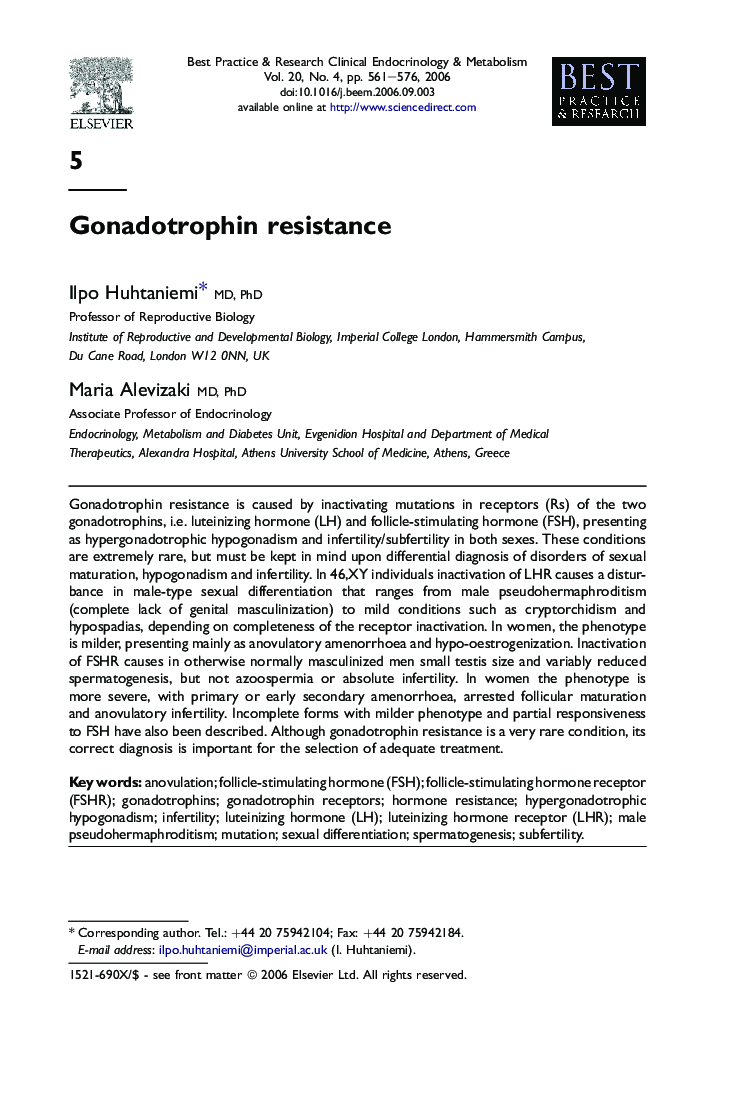| Article ID | Journal | Published Year | Pages | File Type |
|---|---|---|---|---|
| 2792266 | Best Practice & Research Clinical Endocrinology & Metabolism | 2006 | 16 Pages |
Gonadotrophin resistance is caused by inactivating mutations in receptors (Rs) of the two gonadotrophins, i.e. luteinizing hormone (LH) and follicle-stimulating hormone (FSH), presenting as hypergonadotrophic hypogonadism and infertility/subfertility in both sexes. These conditions are extremely rare, but must be kept in mind upon differential diagnosis of disorders of sexual maturation, hypogonadism and infertility. In 46,XY individuals inactivation of LHR causes a disturbance in male-type sexual differentiation that ranges from male pseudohermaphroditism (complete lack of genital masculinization) to mild conditions such as cryptorchidism and hypospadias, depending on completeness of the receptor inactivation. In women, the phenotype is milder, presenting mainly as anovulatory amenorrhoea and hypo-oestrogenization. Inactivation of FSHR causes in otherwise normally masculinized men small testis size and variably reduced spermatogenesis, but not azoospermia or absolute infertility. In women the phenotype is more severe, with primary or early secondary amenorrhoea, arrested follicular maturation and anovulatory infertility. Incomplete forms with milder phenotype and partial responsiveness to FSH have also been described. Although gonadotrophin resistance is a very rare condition, its correct diagnosis is important for the selection of adequate treatment.
